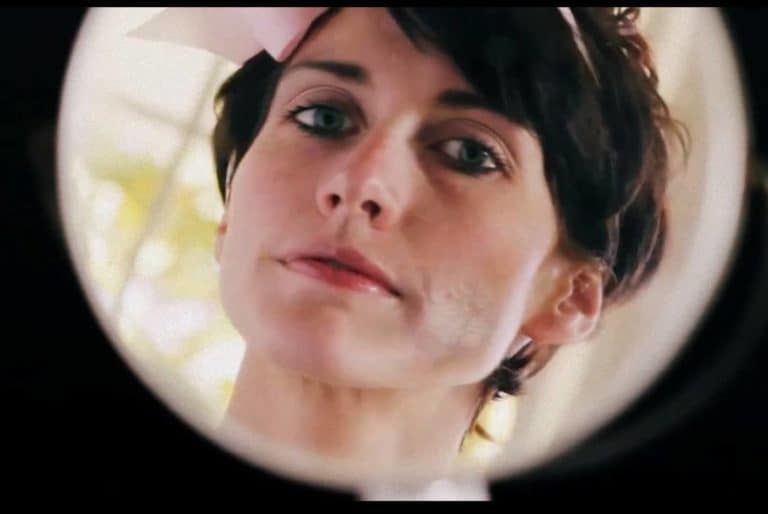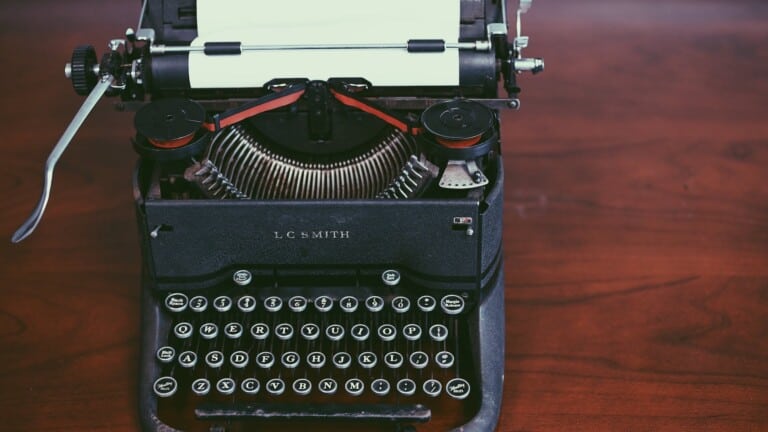Voici un petit court-métrage tourné par Emily Janice Card et Keith Paugh qui pourrait me réconcilier avec Jane Austen et le roman sentimental sur la condition féministe en général :
Tous les articles sur la thématique "novel"
English Literature
Narratives
Lord Jim by Joseph Conrad
- Lord Jim by Joseph Conrad : “A free and wandering tale”
- Lord Jim : How is Conrad’s first-hand experience of seamanship perceptible throughout the Patna episode ?
Macbeth by William Shakespeare
A Midsummer Night’s Dream by William Shakespeare
- Introduction to A Midsummer Night’s Dream
- Background of A Midsummer Night’s Dream
- Structure in A Midsummer Night’s Dream
- A Midsummer Night’s Dream : a comedy
Richard III by William Shakespeare
- Richard III : the ambiguity of Richard’s evil
- Richard III : Order and Disorder, the Elizabethan problem
World War One Poetry
- World War One poetry : a problematic issue
- War Poet : Rupert Brooke (1887-1915)
- War Poet : Edward Thomas
- War Poet : Wilfried Owen
Regeneration by Pat Barker
- Introduction to Regeneration by Pat Barker
- The plot in Regeneration by Pat Barker
- The setting in Regeneration by Pat Barker
- First dialogue between Rivers and Sassoon in Regeneration
- Historical figures and fictional characters in Regeneration
- Landscape and mindscape in Regeneration
- A transformed vision of time in Regeneration
The Short Story and the Novel
Introduction
The Short Story appeared in the 19th century, inherited from tales and narratives. As Edgar Allan Poe stated, a Short Story must have a “unity of impression, of totality and of single effect”.
It could be compared to poetry: consciousness, inner life, and the end of the story subjected to many interpretations lead to a sudden illumination from the part of the reader: at a certain point, this latter understands everything.
The Novel is based on a principle of disgression whereas the short story is based on compression. In the short story, there are no useless details and everything is important: one single detail can deeply affect a character and have many consequences on the plot.
The short story is short (!) but tends to go thoroughly into the characters’ minds. The spiritual and inner quest, as well as the closed spaces, are necessary to the achievement of the plot: there is often a scheme of circularity, ie we always go back to the beginning, even if it has changed.
The final situation is the sum of the initial situation mixed up with transformations, either affecting the character himself or his surrounding.
The Short Story and the Novel
Length : A short story is short and a novel is relatively long.
The term ” short story ” is normally applied to works of fiction from one thousand to fifteen thousand words.
Novels are generally thought of containing about forty-five thousand words or more. The short story is neither a truncated novel nor a part of an unwritten novel.
Edgar Allan Poe settled the matter of a short story’s length when he said it should be short enough to be read in one sitting.
Poe also said the story should be long enough to produce the desired effect on the reader.
Intensity
The plot of the short story will often turn on a single incident that takes on great significance for the characters.
The art of Poe depends for success on intensity and purity of emotional effect based on rigorous selection and arrangement of materials and on intensity and purity of emotional effect. Poe aimed at a sublimation of terror.
Development implies time, and the writer of a short story has little time at his disposal.
Therefore, characters seldom develop in the short story. Rather, they are revealed to us.
The ordering of events in The Great Gatsby
Introduction
In The Great Gatsby Fitzgerald condensed the story’s events. It appears that two important changes were introduced:
1. Fitzgerald suppressed a long episode of Gatsby’s childhood to heighten the sense of mystery surrounding his protagonist’s youth. This fragment was then turned into a short story Absolution that was published in a review by Mercury.
2. The second important change concerned the order of the events and the fact that in the original version, it was Gatsby who spoke.
In the final version, all the action unfolds during one summer – from mid-June to early September – and the geographical location is confined to New York, Long Island: East Egg and West Egg. The tragic dimension is also increased due to the fact that all the events have occurred before the curtain rises.
I. Scrambled chronology
The story’s events have been scrambled, but it is a sign of artistic order. Besides we get to know Gatsby much in the same way as in real life we become acquainted with a friend, namely progressively by fitting together fragments that are picked up as we read the novel.
First Gatsby appears to Nick as a pictorial vision, an emblematic figure that is almost unreal in the night: “Fifty feet away a figure had emerged from the shadow of my neighbour’s mansion…regarding the silver pepper of the stars” (p27). Then through Nick’s narrative, we move forward and backward over Gatsby’s past.
Structure and Narration in The Great Gatsby
The Great Gatsby is the third novel of Fitzgerald, published in 1925 after This Side of Paradise (1920) and The Beautiful and the Damned (1922).
Introduction
It was a turning point in Fitzgerald’s literary career because it was to improve on his previous works: he tested new techniques and insisted on the novelty of his enterprise: ‘I want to write something new, something extraordinary and beautiful and simple and ‘intricately patterned’ (letter to Perkins, agent at Scribner’s).
Indeed, Fitzgerald devoted a lot of care and attention to pruning unnecessary passages and tried to introduce editing methods (just like a filmmaker) to re-arrange his story in movie sequences.
In The Great Gatsby, Fitzgerald’s main innovation was to introduce a first-person narrator and protagonist whose consciousness filters the story’s events.
This device was not a total invention since a character through whose eyes and mind the central protagonist is discovered is to be found in two of Conrad’s books: Heart of Darkness and Lord Jim.
As usual with this device, the main protagonist remains strange and shady. This technique reinforces the mystery of the characters.
The second advantage is that the mediation of a character-witness permits a play between the real and the imaginary.
This indirect approach is inherited from Nathaniel Hawthorne. Hence, it is difficult to distinguish between true representation and fantasizing. For Emerson, the vision was more important than the real world.


